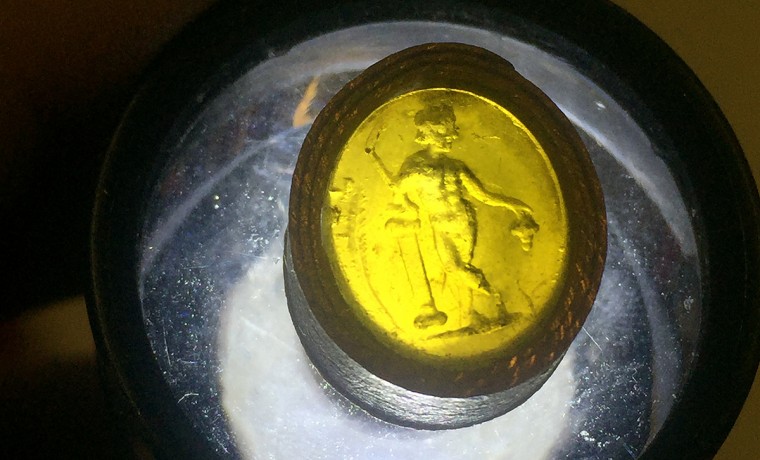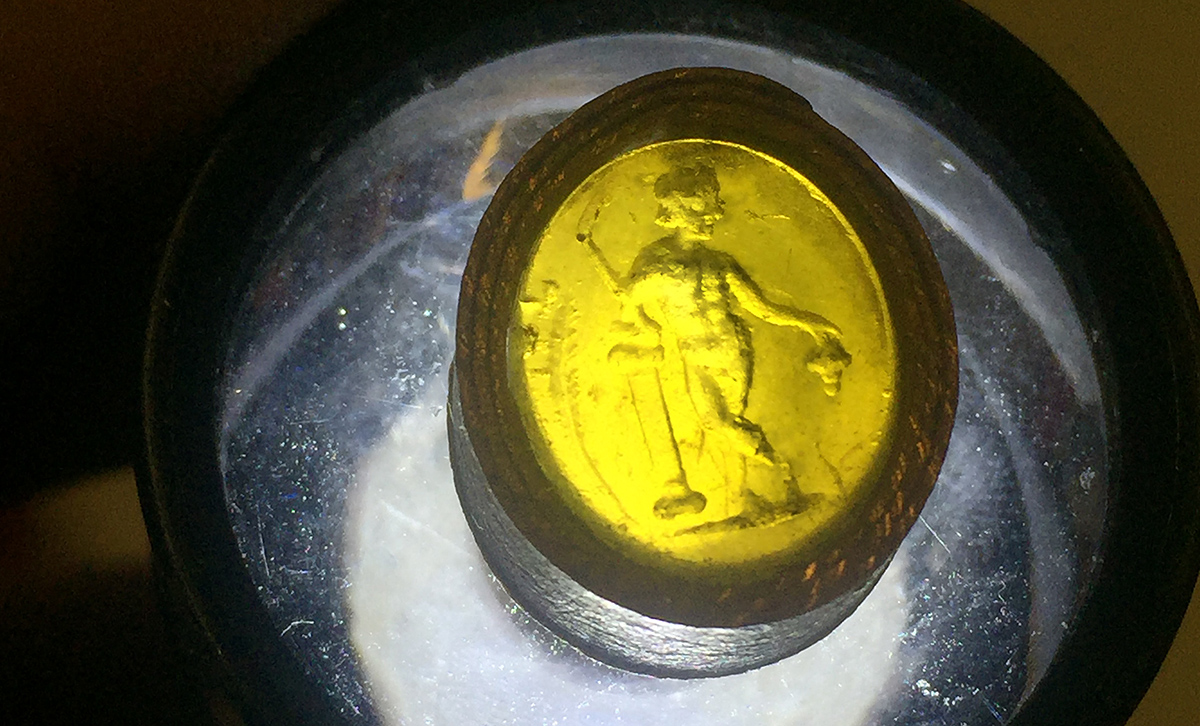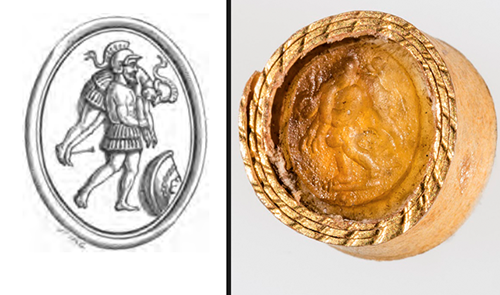Students Catalog Roman Gems during Museum Internship


During the Roman Empire, the art of gem carving or intaglio provided a way to characterize one’s self, family or acquaintances.
This summer, three Wesleyan students with an interest in classical studies worked with a Roman intaglio collection previously owned by J. Pierpont Morgan (father of J.P. Morgan) at the Wadsworth Atheneum Museum of Art in Hartford.
As interns, Maria Ma ’17, Margot Metz ’18, and Emma Graham ’19 collaborated on documenting and cataloging about 200 intaglio gems, which made the collection accessible to a wider audience of scholars and museum visitors. The gems were hidden from public view for decades.

“It’s so exciting that our students had the opportunity to work in the local community and to employ what they know about Greek and Roman antiquity in a partnership with a wonderful museum like the Wadsworth Atheneum,” said Lauren Caldwell, associate professor of classical studies.
Graham, a College of Letters major, felt the internship would perfectly combined her two intellectual passions: classics and art history.
“I have always been interested in how these two areas of study overlap and influence each other,” Graham said. “Also, I have always been a great lover of museums and I was interested in what goes on behind the scenes at a museum.”
The students would frequent the museum three days a week for about six hours a day. During their time, they documented the gems’ measurements, material and imagery.
“The subject matter of the gem determined how long we spent on each one. For example, we were able to identify animals very quickly but other gems, such as badly weathered gems or gems with more complex imagery, took more much time,” Graham said.
In order to determine the symbolic meaning of each gem, the students worked together and consulted intaglio collections online owned by the Museum of Fine Arts Boston and The British Museum, as well as a huge collection of imprints of intaglio gems housed at Cornell University.
“We were able to personally work with every gem in the collection, which was truly an amazing experience,” Graham said.
Metz was interested in the internship because she wanted to explore another area of ancient civilization. “It was fascinating being able to apply what I had learned in the classroom at Wesleyan in a practical manner at the museum. We were able to identify generic figures as gods and goddesses, such as Neptune and Ceres, by using the objects they were pictured with in gems and comparing them to stories in mythology,” she said.
The internship, which concluded June 23, was jointly supervised and organized by Wesleyan faculty and Atheneum staff including Caldwell; Clare Rogan, curator of the Davison Art Center; Linda Roth, the Charles C. and Eleanor Lamont Cunningham Curator of European Decorative Arts; and Johanna Miller, school and teacher programs specialist at the Wadsworth Atheneum. The Watson Squire Fund in the Department of Classical Studies supported the students’ room and board expenses. Students applied and interviewed for the internship through the Atheneum.
“The interns did a great job and their work will be entered into our database and made available to the public through our website,” Roth said. “There already is a small selection on view now in a gallery devoted to Art and Curiosity Cabinets.”

